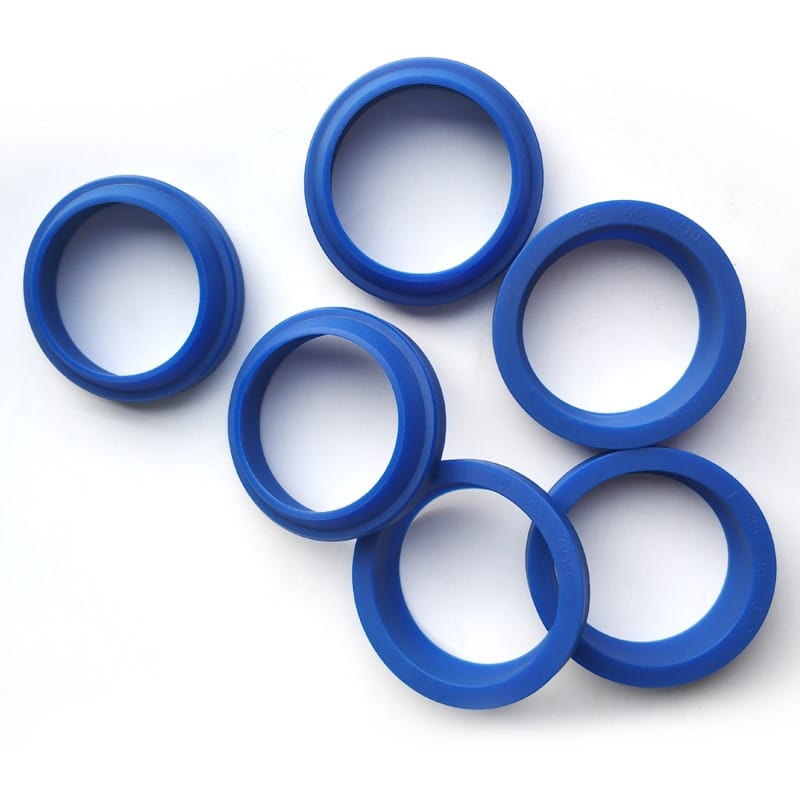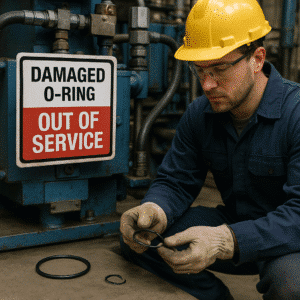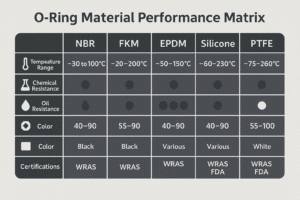High-speed rotating shafts generate heat, pressure, and intense wear. Choosing the wrong oil seal can lead to leakage, friction failure, and costly equipment breakdowns. So how do you choose the right seal?
For high-speed rotary applications, selecting the right oil seal requires a deep understanding of shaft speed, pressure, material compatibility, and sealing environment — especially in motors, pumps, and CNC equipment.

This guide breaks down key factors to consider, practical examples, and proven sealing solutions designed to optimize high-speed system performance.
Which sealing system should you use for a high-speed rotating shaft?
The most reliable sealing system for high-speed rotary shafts is the radial lip seal, particularly in spring-loaded configurations. In environments with high RPM, engineers often turn to dual-lip FKM seals with steel casings for reinforced structure and heat resistance.
Our customers often select TG4 double-lip skeleton oil seals to protect shaft bearings in applications like fan motors or turbines operating beyond 5000 RPM.
What is the best oil seal material for high-speed applications?
Material selection is crucial for heat resistance and dynamic performance. For example, FKM (Viton®) performs well under both friction and elevated temperature, while PTFE is ideal for dry-running or chemical-laden environments.
In high-load compressors, engineers prefer FKM oil seals rated up to 200°C due to their ability to maintain elasticity and sealing integrity even at elevated RPMs.
| Material | Max RPM | Temp Range | Ideal Use Case |
|---|---|---|---|
| NBR | 4,000 | -40°C to 120°C | General motors, gearboxes |
| FKM | 6,000+ | -30°C to 200°C | Turbines, CNC spindles |
| PTFE | 10,000+ | -50°C to 250°C | Dry shafts, food-grade |
| Silicone | 5,000 | -60°C to 180°C | Low-pressure shafts |
Which type of oil seal is utilized in high-speed rotary systems?
Rotary systems above 3000 RPM typically use spring-loaded lip seals with minimal friction. For extremely high-speed setups, like high-frequency spindle drives or robotic actuators, reliable radial shaft seals with low-friction PTFE lips are preferred.
These seals maintain oil retention while reducing lip deformation, especially when paired with a fine-finish shaft surface and adequate lubrication.
How to select an oil seal for high-speed machinery?
Successful seal selection should factor in:
- Shaft diameter and RPM
- Operating temperature and lubricant type
- Internal pressure and ambient contaminants
- Shaft surface finish (Ra < 0.4μm recommended)
Refer to our Oil Seal Cross Reference Chart to identify suitable material and dimensions based on RPM and PV value.
PV (Pressure × Velocity) exceeding 0.5 MPa·m/s often requires PTFE or advanced FKM sealing systems to prevent early breakdown.
What is the best seal design for a rotating shaft?
Seal geometry should match the system's friction profile and pressure conditions. For example:
- Single-lip NBR seals suffice for sub-3,000 RPM shafts
- Double-lip FKM seals enhance protection in mid-speed oil pumps
- PTFE rotary shaft seals handle >10,000 RPM with minimal wear
In one aerospace assembly project, our team provided TC skeleton oil seals with metal shell reinforcement, resulting in improved seal stability at 7000 RPM and reduced lubricant vaporization.
What happens if you use the wrong oil seal for high-speed systems?
Improper seal choice often leads to:
- Thermal degradation or lip hardening
- Leakage and loss of lubricant
- Excessive torque resistance
- Noise and vibration under rotation
A European client operating high-speed electric motors solved frequent failures by replacing generic EPDM seals with FKM alternatives, identified through our oil seal size selection guide. Their motor life extended by 3×, and operating temperature dropped by 15°C.
Conclusion
For high-speed rotary systems, oil seals must combine thermal endurance, low-friction material, and precision tolerances. FKM and PTFE dominate this space due to their ability to sustain sealing integrity under extreme motion.
Related topic
Rotary Shaft Seal Selection Guide (2025)
Oil Seal vs O-Ring: Key Differences Explained
Oil Seal Identification: Match Size & Performance
Let’s Solve Your High-Speed Sealing Challenge
Whether you're maintaining compressors, designing spindles, or sourcing for industrial motors — Hengoseal delivers oil seals engineered for high-speed performance.
📧 Email: [email protected]
📱 WhatsApp: +86 17622979498
Get custom samples or tech support in 24 hours.


